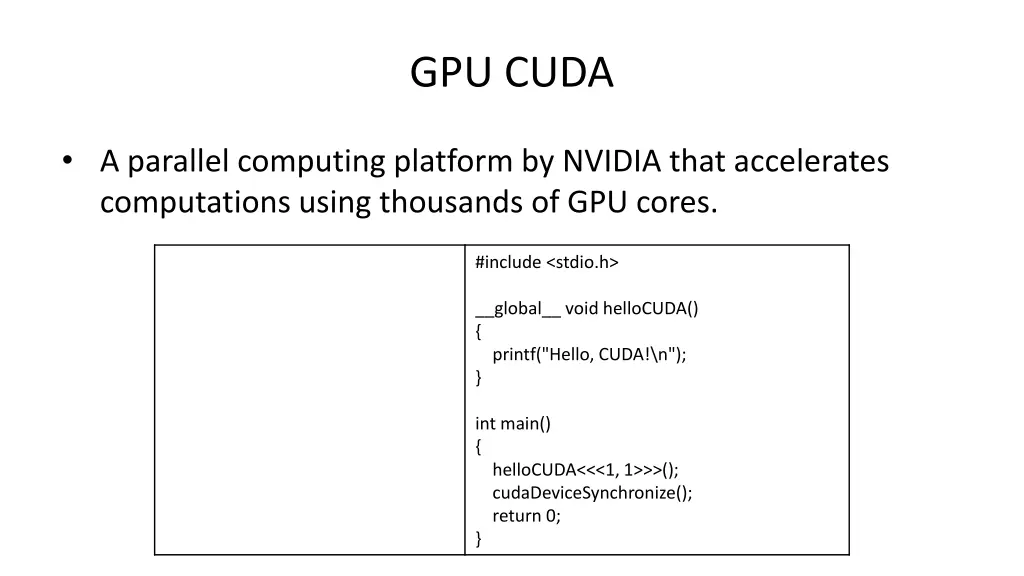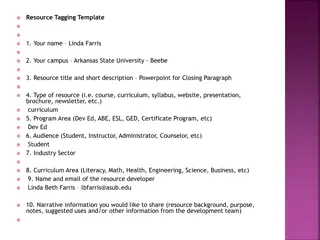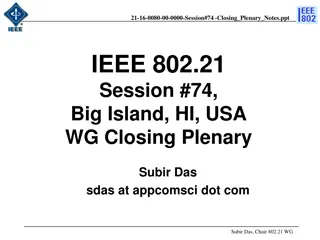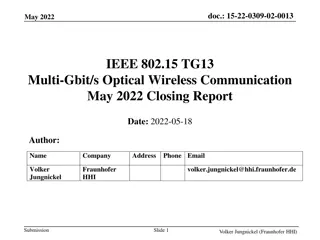
Cutting-Edge Technologies and Innovations in Computing
Discover the latest advancements in computing technologies, from GPU CUDA parallel computing by NVIDIA to supercomputing for large-scale simulations. Explore cloud computing vs. on-site PC, programming languages and frameworks, AI for video game content creation, and the immersive worlds of VR and AR. Stay informed about the future of computing with these powerful tools and applications.
Download Presentation

Please find below an Image/Link to download the presentation.
The content on the website is provided AS IS for your information and personal use only. It may not be sold, licensed, or shared on other websites without obtaining consent from the author. If you encounter any issues during the download, it is possible that the publisher has removed the file from their server.
You are allowed to download the files provided on this website for personal or commercial use, subject to the condition that they are used lawfully. All files are the property of their respective owners.
The content on the website is provided AS IS for your information and personal use only. It may not be sold, licensed, or shared on other websites without obtaining consent from the author.
E N D
Presentation Transcript
GPU CUDA A parallel computing platform by NVIDIA that accelerates computations using thousands of GPU cores. #include <stdio.h> __global__ void helloCUDA() { printf("Hello, CUDA!\n"); } int main() { helloCUDA<<<1, 1>>>(); cudaDeviceSynchronize(); return 0; }
Super Computing High-performance computers designed for large-scale simulations, AI research, and scientific calculations. Supercomputers enhance video processing, AI-driven media creation, CGI rendering, and VR/AR simulations.
Cloud Computing vs On-Site PC Cloud Computing: Scalable, cost-efficient, remotely accessible, and automatically updated. Ideal for collaboration and flexibility. On-Site Computing: Provides control, security, customization, and reliable performance without internet dependency. Best for specialized workloads.
Programming Languages & Frameworks Tools for software development languages like Python & C++, frameworks like TensorFlow & React. Web Development: Uses HTML, CSS, JavaScript with frameworks like React, Vue.js, and Node.js for dynamic and scalable applications. Multimedia Development: Leverages Python, C# (Unity), C++ (Unreal Engine) for interactive media, gaming, and VR/AR.
AI for Video Game Content Creation Procedural generation: AI creates dynamic game worlds and environments. Adaptive NPC behavior: NPCs respond intelligently to player actions. Automated storytelling: AI generates quests, dialogues, and branching narratives. Asset & animation creation: AI assists in designing textures, models, and motion capture. Testing & bug fixing: AI detects glitches and balances gameplay efficiently. Personalized experiences: AI tailors difficulty, matchmaking, and rewards.
VR & AR Virtual Reality (VR) fully immerses users in digital environments through headsets and controllers, creating an interactive, simulated world. It s widely used in gaming, training simulations, and virtual collaboration. Augmented Reality (AR) overlays digital elements onto the real world using devices like smartphones or AR glasses, enhancing real-world experiences. AR is commonly seen in applications like interactive retail, education, and navigation.






















